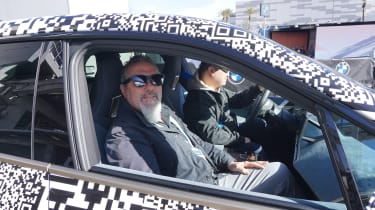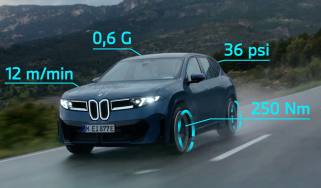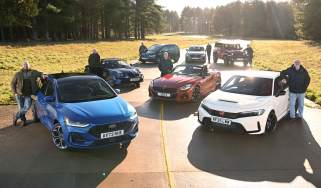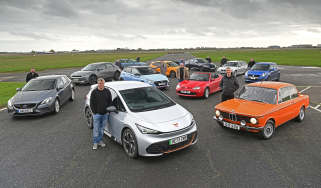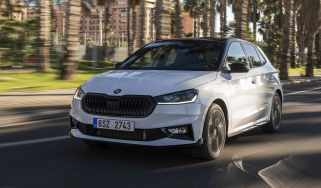BMW augmented reality driving glasses give a fresh perspective on your car journeys
We try augmented reality glasses, while remote valet parking and in-car AI and games were showcased
The 2024 Consumer Electronics Show (CES) is a showcase of cutting-edge technology, and BMW used the Las Vegas event to demonstrate some of its latest digital tech. One headline innovation it was promoting was augmented reality via glasses - and we tried it.
The BMW augmented reality (AR) headset comprised a pair of XReal Air 2 glasses from the AR manufacturer of the same name. BMW is at pains to state that its Bluetooth-compatible AR tech will be available to use on a variety of so-called 'wearable tech', and it believes that this growth market is well suited to in-car use.
The glasses (which can be modified to include prescription lenses) work in a similar way to the kind of head-up display that you'd get in a high-spec BMW, with images projected from the top of the glasses frame on to 45-degree glass behind the lenses that overlays the images on to the car's surroundings. We tried the glasses from the passenger seat of a BMW iX, and while a sunny day meant contrast and reflections were an issue, there were plenty of features on show.
When moving off, the car's parking sensors detected obstacles nearby, and as well as showing the results on the car’s main screen as in the standard iX, the glasses provided a 'real time' view outside of the car to show what the car's sensors were detecting.
Traffic-sign recognition also displayed speed limits in real time at the side of the road, while navigation directions are converted into arrows that pulse in the direction you need to take at the next junction, perfectly matching the curve of the turn needed. Other obstacles, such as closed roads and diversions, can also be shown.
The AR view covers around 180 degrees from the front of the car, while looking down at the dashboard in front of you reveals a circular display with a navigation map in the centre. The system works smoothly, while bone conduction headphones mean there's audio for the user that's barely perceptible by other occupants. This means it's possible to watch videos via the AR glasses without disturbing other passengers.
While it's possible for the driver to wear the AR glasses while driving, this tech will soon be surpassed by BMW's next-generation head-up display, where the whole windscreen will be able to show information in a similar way.
The new AR tech will be available via over-the-air updates to cars using BMW's latest Operating System 9 (OS9) and subscribed to its Digital Premium service. In addition this service offers a range of add-ons from BMW and third parties.
BMW smart voice assistant
Artificial Intelligence was the big buzz at CES this year, and BMW was keen to promote its own software, the Alexa Large Language Model (LLM). Developed in conjunction with Amazon, the software enhances the BMW Personal Assistant voice control system with responses that are designed to be more natural than before. In addition, the system uses information from the owner's manual of the car it's fitted to so that the responses that it delivers are accurate.
Gaming on the move
Another new addition is the ability to pair Bluetooth gaming controllers (such as those for PlayStation or Xbox devices) to OS9, so while there are games on offer that are playable via the touchscreen, the range of playable games has been broadened. Showcased at CES was Beach Buggy Racing 2, with two controllers connected for split-screen racing. While this game is a staple of Tesla's operating system, the BMW set-up can't be used with the car’s steering wheel, but it does have full control via the controller - the Tesla set up drives the cars in the game automatically.
Another addition is AirConsole, an app that offers a range of 'casual games' that are easy to pick up. You don't need a Bluetooth controller for them, either, because you can use a smartphone paired to the system.
Teleoperated valet parking
Another BMW tech demonstration at CES was of a remote-control valet parking system. This Level 4 automated parking system can either operate fully autonomously - where the car locates and parks in an empty bay by itself - or be teleoperated. That means the car can be driven remotely using its cameras and sensors to position it accurately.
At CES, a gaming rig was set up so that showgoers could 'drive' a BMW iX from a few feet away from where it was actually stopped, with just the images from the car’s cameras and sensors guiding the operator's inputs. BMW claims that this system will help where a fully autonomous system find the surroundings too challenging, such as in a tight multi-storey car park, or where there are other vehicles present.
Are you excited about this new technology or do you think it's too distracting? Tell us in the comments section...
Find a car with the experts


